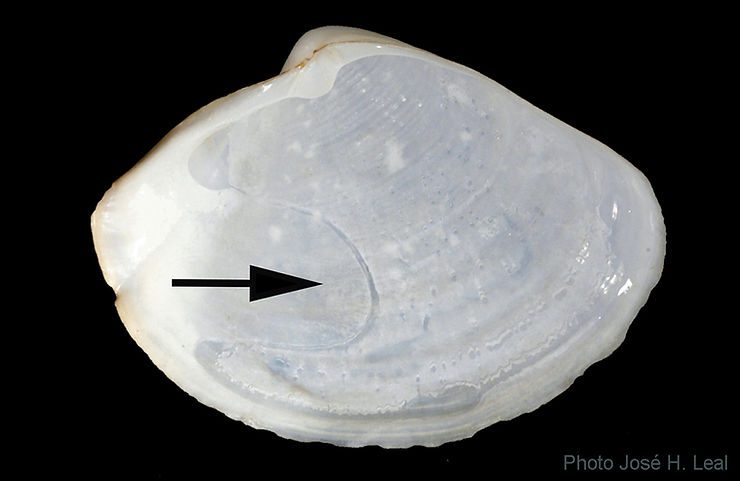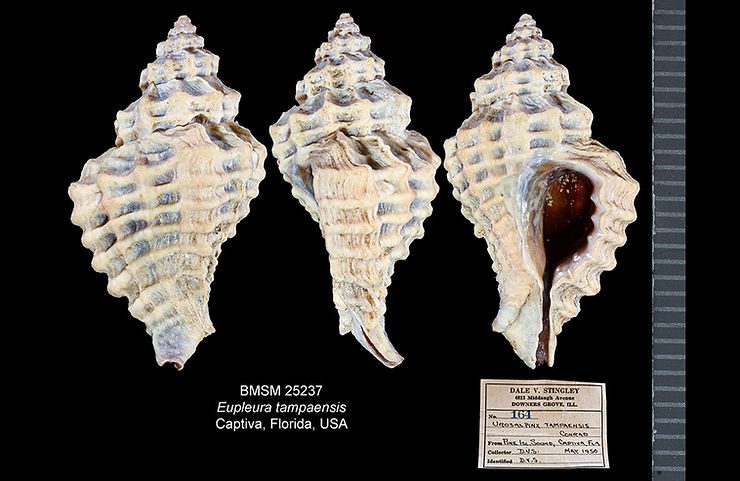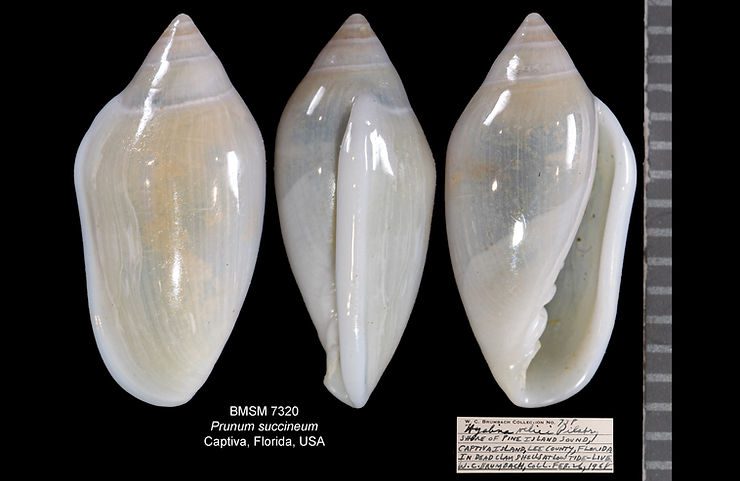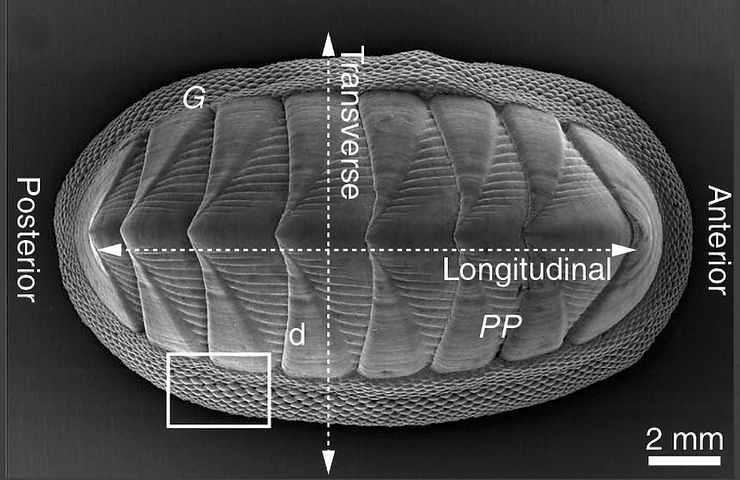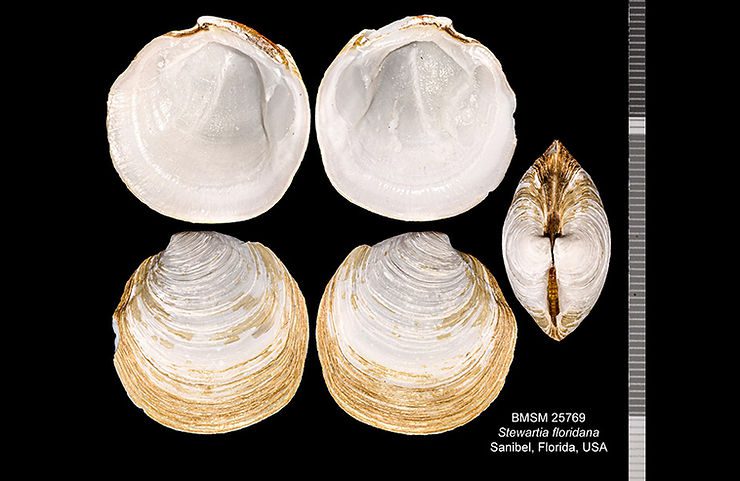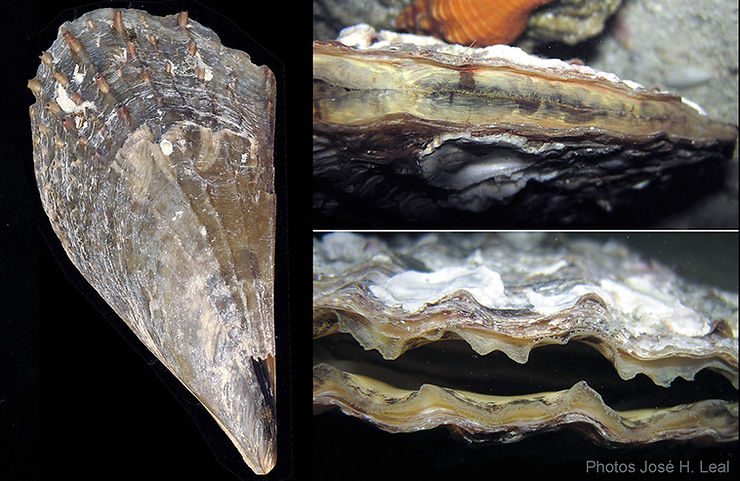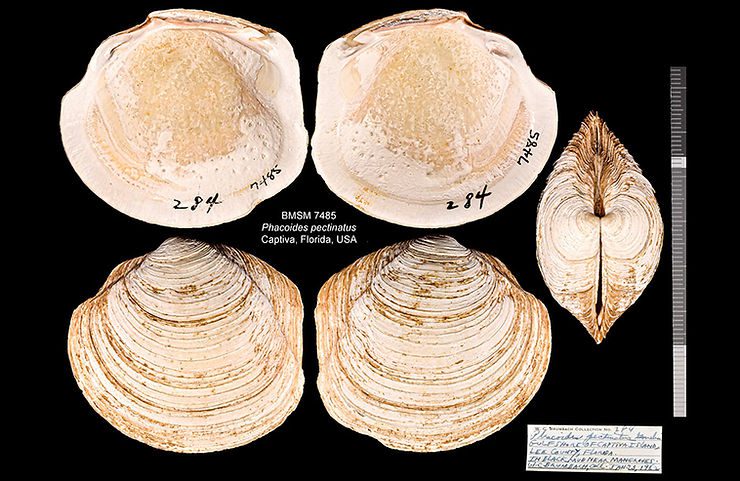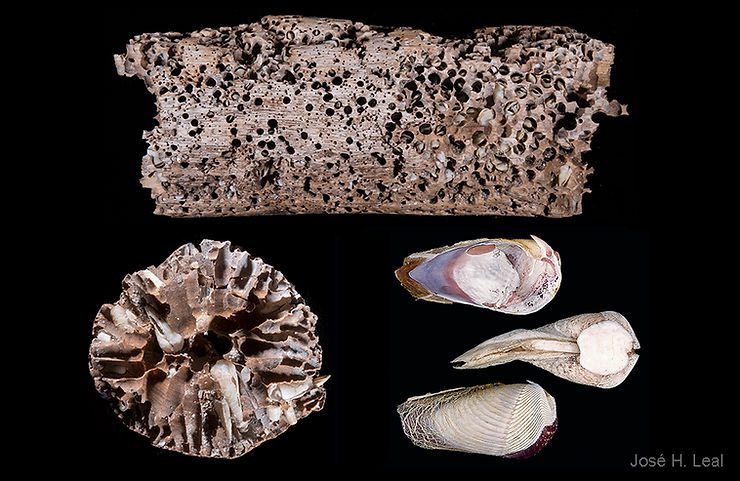
Striate Piddocks: Stowaways for Life
The Striate Piddock, Martesia striata (Linnaeus, 1758) is one of the species of wood-boring bivalves found along the coast of SW Florida. Its shells may be found on local beaches, always confined to pieces of driftwood, such as the little (11 cm, or about 4.5-inch) log in the top part of the picture. The log is riddled with the remnants of a few hundred Striate Piddocks. They may grow to be more than an inch long, and have free-living larvae that live in excess of a month drifting in the ocean.
